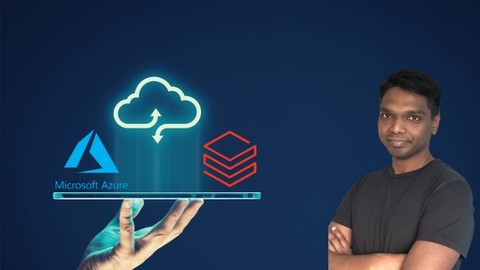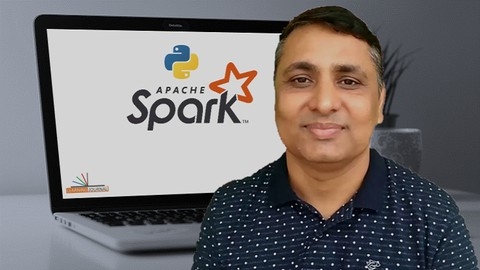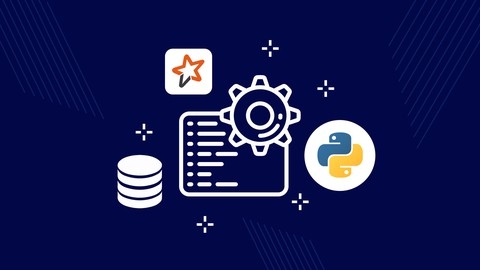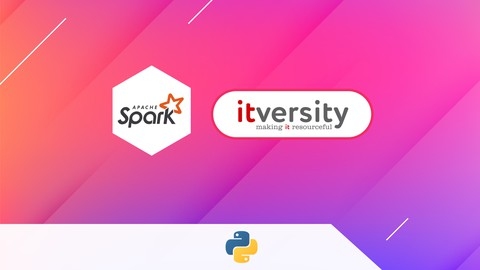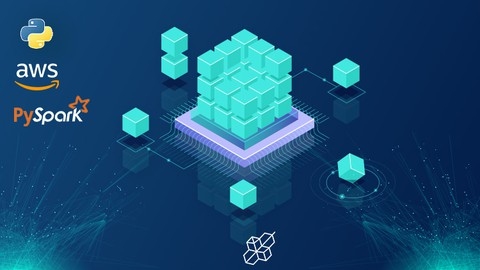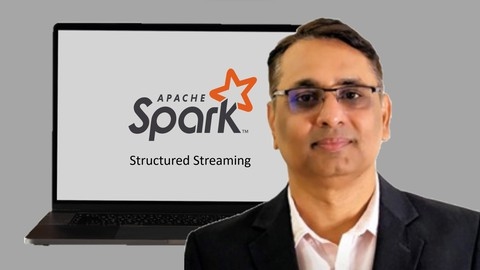PySpark, the Python API for Apache Spark, has become an indispensable tool for data scientists and engineers working with massive datasets.
Its ability to distribute data processing across clusters allows for efficient analysis and manipulation of big data, making it a highly sought-after skill in today’s data-driven world.
By learning PySpark, you can unlock the power to tackle complex data challenges, build scalable data pipelines, and gain valuable insights from large datasets.
This knowledge can open doors to exciting career opportunities in fields like big data analytics, machine learning, and data engineering.
Finding the perfect PySpark course on Udemy, however, can be overwhelming.
With a plethora of options available, it’s easy to get lost in the sea of courses and struggle to identify the one that best suits your needs and learning style.
You want a course that not only covers the theoretical foundations but also provides hands-on experience and practical projects to solidify your understanding.
After carefully reviewing numerous courses, we’ve concluded that the Spark and Python for Big Data with PySpark course is the best overall choice on Udemy.
This comprehensive course takes you from the basics of PySpark installation and setup to advanced topics like machine learning with MLlib and real-time data processing with Spark Streaming.
The hands-on projects and clear explanations make it an ideal choice for both beginners and those looking to deepen their PySpark expertise.
This is just one of the many excellent PySpark courses available on Udemy.
To help you find the perfect fit for your specific learning goals and experience level, we’ve compiled a list of other top-rated courses.
Keep reading to discover more options and embark on your journey to mastering PySpark!
Spark and Python for Big Data with PySpark
This PySpark course takes you from the ground up.
You begin by installing PySpark and Python and have the option to set up your learning environment using Databricks, VirtualBox, or even AWS EC2.
A crash course in Python gets you up to speed on the fundamentals, including Jupyter Notebooks.
With the basics covered, you’ll dive into Spark DataFrames, learning to efficiently manipulate and analyze large datasets.
You’ll master essential operations like filtering, grouping, and handling missing data, solidifying your understanding through practical project exercises.
You will then explore the exciting world of machine learning with Spark’s MLlib library.
You’ll tackle algorithms like linear and logistic regression, decision trees, and random forests, gaining hands-on experience through coding projects.
You’ll even delve into K-means clustering, a powerful technique for grouping data points, and learn how to apply these algorithms to real-world scenarios.
The course goes beyond the basics, introducing you to building recommender systems using collaborative filtering – a technique used by many companies to provide personalized recommendations.
You’ll also explore natural language processing (NLP) using specialized tools to extract meaning and insights from text data.
Finally, you’ll learn about Spark Streaming, a technology for processing real-time data streams, and apply this knowledge to a project analyzing live Twitter data.
Azure Databricks & Spark For Data Engineers (PySpark / SQL)
This course covers a wide range of topics, from the basics of Azure Databricks and cluster management to advanced concepts like Delta Lake, incremental data loading, and integration with Azure Data Factory.
It starts with an introduction to Azure Databricks, its architecture, and how to create a Databricks service.
You’ll learn about the different types of clusters, their configurations, and pricing.
The instructor also covers important topics like cost control and cluster policies.
Next, you’ll dive into Databricks notebooks, which are the primary interface for working with Spark.
You’ll learn about magic commands, Databricks utilities, and how to access data from Azure Data Lake using various authentication methods like access keys, SAS tokens, and service principals.
The course also covers best practices for securing secrets using Azure Key Vault and Databricks secret scopes.
One of the highlights of the course is the Formula1 project, which runs throughout the course.
You’ll learn how to ingest data from CSV and JSON files, process multiple files, and use Spark SQL to analyze the data.
The instructor covers important transformations like filtering, joins, and aggregations, as well as window functions and temporary views.
As you progress through the course, you’ll learn about Spark SQL databases, tables, and views.
You’ll create tables from various data sources and perform complex analyses using SQL.
The course also covers data visualization using Databricks dashboards.
In the later sections, you’ll learn about incremental data loading and the Delta Lake format, which addresses some of the pitfalls of traditional data lakes.
You’ll implement incremental loads using notebook workflows and learn about advanced Delta Lake features like updates, deletes, and time travel.
The course also covers integration with Azure Data Factory, including creating pipelines for data ingestion and transformation.
You’ll learn how to handle missing files, debug pipelines, and create triggers for automated execution.
Finally, the course introduces Unity Catalog, a new feature in Databricks that provides a unified governance model for data and AI assets.
You’ll learn about the Unity Catalog object model, how to access external data lakes, and how to create storage credentials and external locations.
The course includes a mini project that puts all these concepts together.
Throughout the course, you’ll work with a variety of technologies and tools, including Python, SQL, Delta Lake, Azure Data Lake, Azure Data Factory, and Power BI.
The instructor provides clear explanations and demonstrations, making it easy to follow along and understand the concepts.
Apache Spark 3 - Spark Programming in Python for Beginners
This course starts with the basics of Big Data and Data Lakes, explaining the significance of Hadoop’s evolution and introducing Apache Spark and Databricks Cloud.
It then guides you through setting up your development environment, whether you’re using Mac or Windows, ensuring you’re ready to write and run Spark code effectively.
The curriculum dives into Spark DataFrames and Spark SQL, teaching you how to manipulate and query data through practical examples.
You’ll gain insights into the Spark Execution Model and Architecture, learning about cluster managers and execution modes to optimize your applications.
The course also covers the Spark Programming Model, focusing on Spark Sessions, project configuration, and unit testing, preparing you for real-world development scenarios.
Advanced topics include working with Spark’s Structured API Foundation, understanding Data Sources and Sinks, and mastering data transformations and aggregations.
This knowledge equips you to handle various data processing tasks with ease.
The capstone project offers a chance to apply your skills in a comprehensive project, including Kafka integration and setting up CI/CD pipelines.
Quizzes and tests throughout the course help reinforce your learning, while bonus lectures and archived content provide additional resources.
By the end of this course, you’ll have a solid understanding of Apache Spark and the skills to tackle data processing challenges confidently.
Data Engineering Essentials using SQL, Python, and PySpark
This course covers essential topics like SQL, Python, Hadoop, and Spark, making it ideal for both beginners and experienced professionals aiming to sharpen their data engineering skills.
You’ll start with SQL for Data Engineering, learning about database technologies, data warehouses, and advancing from basic to complex SQL queries.
The course then guides you through Python programming, from setting up your environment to mastering data processing with Pandas Dataframe APIs.
A significant focus of this course is on Apache Spark.
You’ll learn to set up a Databricks environment on the Google Cloud Platform (GCP), gaining hands-on experience in data processing with Spark SQL and PySpark.
This includes creating Delta tables, performing data transformations, aggregations, joins, and optimizing Spark applications for better performance.
Real-world projects like a File Format Converter and a Files to Database Loader offer practical experience, while sections on ELT data pipelines using Databricks provide insights into efficient data pipeline construction and operation.
Performance tuning is thoroughly covered, teaching you to read explain plans, identify bottlenecks, and apply optimization strategies.
Additionally, the course equips you with troubleshooting and debugging skills for SQL, Python, and Spark applications, preparing you to solve common development and deployment issues.
A Crash Course In PySpark
In this crash course, you will develop a strong understanding of PySpark, a powerful tool for analyzing huge amounts of information.
You’ll begin by setting up your development environment and learning how to work with dataframes, which are like special containers for your data in PySpark.
You will learn how to bring data into these dataframes and how to inspect them to understand their structure.
The course then dives into the essential skill of data cleaning.
You will discover how to handle missing or repeated data, ensuring your analysis is accurate.
You’ll master the art of selecting and filtering information from these dataframes, zeroing in on exactly what you need.
You learn to ask questions of your data using the familiar language of SQL, directly within PySpark.
You will discover how to group similar pieces of information together and perform calculations on them to find patterns and trends.
Finally, you’ll learn how to save the results of your hard work by writing dataframes to files.
To solidify your skills, the course presents a hands-on challenge.
This real-world scenario lets you apply everything you’ve learned, showing you how PySpark tackles practical data problems.
Master Apache Spark using Spark SQL and PySpark 3
Starting with an introduction to the basics on Udemy, this course guides you through setting up your development environment, using ITVersity Labs for hands-on practice, and mastering Python fundamentals critical for Spark.
You’ll gain practical experience with Hadoop HDFS commands, essential for the CCA 175 Certification exam, and explore the core features of Apache Spark 2.x.
The course meticulously covers Spark SQL, teaching you to run queries, manage databases, and perform basic transformations such as filtering, joining, and aggregating data.
Beyond structured data, you’ll learn to process semi-structured data like JSON, working with ARRAY, MAP, and STRUCT types.
This prepares you to handle a variety of data formats with ease.
The curriculum also focuses on the Apache Spark application development lifecycle, from installation to productionizing your code.
You’ll explore deployment modes, learn how to pass application properties files, and manage external dependencies, equipping you with the skills to develop and deploy Spark applications confidently.
PySpark & AWS: Master Big Data With PySpark and AWS
This PySpark & AWS course begins with the foundations of big data and the “why” behind its significance.
You quickly transition into the exciting world of PySpark, where you’ll master Spark RDDs and DataFrames, the fundamental building blocks of this powerful tool.
You’ll become proficient in data transformations, using techniques like map, filter, and reduce, and develop a strong understanding of Spark SQL for data manipulation.
You’ll then explore more advanced concepts like collaborative filtering with ALS models, enabling you to build recommendation systems similar to those used by popular streaming platforms.
You’ll delve into the world of Spark Streaming, learning to process real-time data, a crucial skill for applications like fraud detection and live dashboards.
And you won’t just learn the theory; you’ll work with real datasets on engaging projects, applying your knowledge to solve real-world problems.
This course seamlessly integrates AWS cloud services, bridging the gap between theory and practical application.
You’ll gain hands-on experience using RDS to create databases for your PySpark projects and build ETL pipelines to move and transform data efficiently.
You’ll even dive into DMS to replicate data, ensuring seamless updates for your applications.
To top it off, you’ll build an interactive chatbot using Amazon Lex and AWS Lambda, illustrating the combined power of PySpark and AWS in creating intelligent systems.
Spark Streaming - Stream Processing in Lakehouse - PySpark
In this PySpark course, you will learn how to process data in real time using Spark Streaming.
You will begin by setting up your environment, whether you use Windows or Mac, and learn the fundamentals of stream processing.
You’ll explore how streaming differs from traditional batch processing and then build your first streaming application.
The course dives into Kafka, teaching you how to set up a cluster in the cloud (AWS or Azure), produce data to Kafka topics, and consume data from them.
As you progress, you’ll master the concepts of idempotence, ensuring data integrity.
The course delves into state management and aggregation in Spark Streaming, including stateless and stateful aggregations.
You’ll learn how to use techniques like watermarking to handle late-arriving data and manage your state effectively.
You’ll explore the Databricks platform, a popular choice for running Spark applications, from creating a Databricks cluster to using Databricks notebooks and understanding the architecture of a Databricks Workspace.
Through a capstone project, you’ll apply what you’ve learned to build a real-time application in a lakehouse environment.
This project will see you designing storage layers (bronze, silver, and gold), implementing data security, and setting up CI/CD pipelines for automated deployments.


